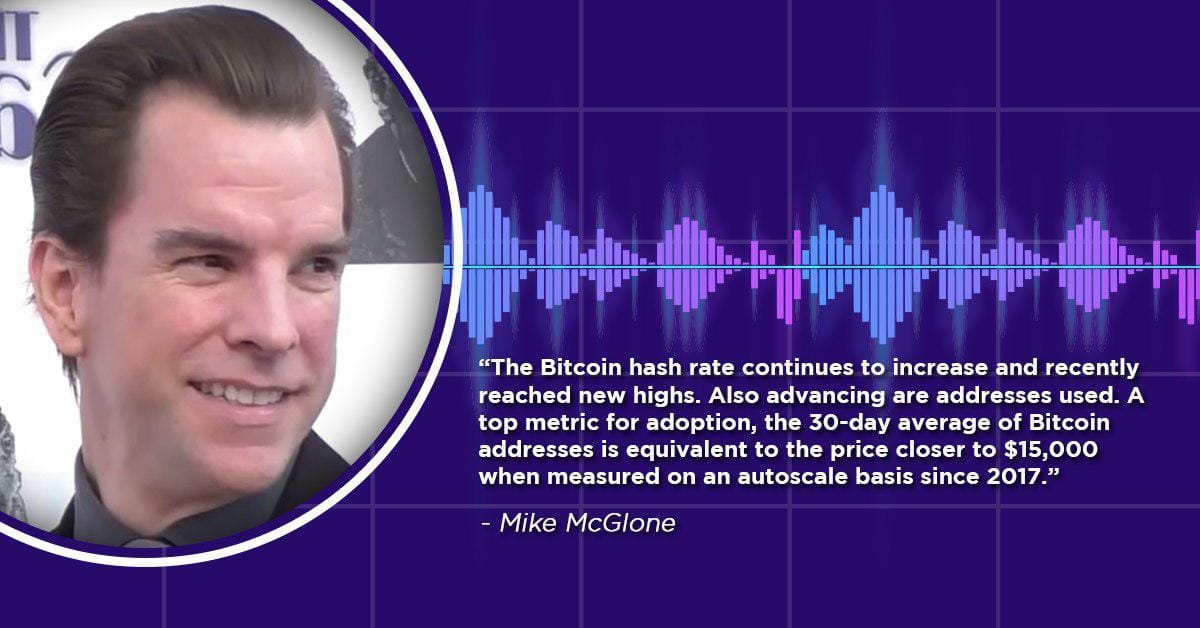Bloomberg crypto newsletter has indicated and in clear words that Bitcoin (BTC) clearly stands underrated and undervalued compared to what its potential is. Bloomberg talks about key indicators that supposedly will accelerate the prospects of Bitcoin further giving it the status it truly deserves. But this can be true only when the key indicators stick to their form and not reverse themselves.
Source: Glassnode
This is an image from Glassnode that truly illustrates the meteoric rise in the number of active addresses. Although 2018 was at its peak, there has been a consistent increase in the addresses which is a good sign. Crypto analyst Mike McGlone from Bloomberg is a hardcore believer in shining prospects of Bitcoin. He believes that with the recent all-time high of hashrate for Bitcoin and a steady increase in the 30-day average of active Bitcoin addresses, the price level should actually be $15,000 for the asset. He was quoted as:
“The Bitcoin hash rate continues to increase and recently reached new highs. Also advancing are addresses used. A top metric for adoption, the 30-day average of Bitcoin addresses is equivalent to the price closer to $15,000 when measured on an autoscale basis since 2017.”
Hashrate is considered as a powerful indicator to measure success. On a very simplistic level, hashrate is the way we measure how much computing power everyone is contributing to mining Bitcoin. Miners use their computer processing power to secure network, record all their transactions and in turn get rewards in Bitcoin. The higher the hashrate of one bitcoin mining machine, the more bitcoin the machine will mine. When hashrate is high the entire Bitcoin blockchain network, will add more machines. Even the difficulty level to mine Bitcoin will apparently increase.
All of the Bitcoin miners compete amongst each other to solve the next block. The more hash power the network has, the faster it can happen. To ensure that the generation rate takes place at an interval of 10 minutes per block. Satoshi Nakamoto included a feature into the protocol that will adjust the difficulty after every two weeks. If within this period, the time between the blocks does not cross the mark, the difficulty will automatically adjust upwards. The opposite happens when the time blocks rises above the number.
McGlone has shown increased levels of optimism about Bitcoin despite its roller-coaster ride. He establishes that Bitcoin has led the way for the major disruption and bent towards digital money and has earned its name as a reliable store of value. He doesn’t rule out that Bitcoin may fail again but he also believes it is unlikely saying that:
“Our graphic depicts primary on-chain metrics that would need to reverse for Bitcoin to not keep appreciating in the price — the hash rate and active addresses.”
Despite Bitcoin going up and down, its on-chain fundamentals have remained really strong. But there is still no source that can reveal when and how these indicators will lead to price correction to what it truly deserves.

